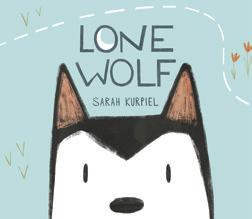
3 minute read
Alumni Q&A
WITH NEWLY SUCCESSFUL CHILDREN’S AUTHOR SARAH KURPIEL

MEET SARAH KURPIEL ’10, WHO PUBLISHED A CHILDREN’S PICTURE BOOK TITLED “LONE WOLF” TO WIDE INDUSTRY ACCLAIM.
It received a starred review from the School Library Journal and was named a Summer 2020 Kids’ Indie Next Pick. Her major in English at North Central College helped define her passion for stories, while also preparing her to earn a Master in Library and Information Science (MSLIS) from the University of Illinois at UrbanaChampaign. She works as an emerging technologies librarian at Benedictine University in Lisle while illustrating and writing original children’s books.
QWHAT INSPIRED YOU TO WRITE AND ILLUSTRATE PICTURE BOOKS?
AI’ve always loved to draw. I can’t count the number of sketchbooks I’ve gone through. When I was 11, I was diagnosed with a form of muscular dystrophy; by middle school, I was pretty sure a career in visual art was not in my future. At North Central, I took several English courses from [former professor of English] Richard Glejzer, who included graphic narratives in his reading lists. Those books had a powerful impact on me. I remember thinking, “I want to illustrate stories.” My first library job reminded me of my love of picture books and I knew what kind of stories I wanted to make.
QHOW DID THE CREATIVE PROCESS EVOLVE?
A“Lone Wolf” is about a Siberian Husky named Maple who is mistaken for a wolf so many times that she starts to believe maybe, just maybe, she is one. I think many readers can relate to the way Maple feels in her moments of self-doubt. Maple is inspired by my childhood dog, a husky named Mikayla. I started the creative process by drawing key pictures, visual moments I couldn’t imagine the book without. I then constructed the concept, plotted each spread and created a dummy, which is a sketched version of the book. Thanks to feedback from my agents and editor, the point-of-view shifted and the story arc evolved. Visual motifs naturally emerged, such as circles, handwritten annotations and dotted lines. Once the editor approved the final dummy, I started the final art. I draw digitally in Photoshop using a Wacom tablet, mostly using digital dry media brushes. I taught myself how to draw in Photoshop in 2016 by watching YouTube videos, observing other illustrators’ techniques, and simply experimenting. Q HOW DID YOU SUCCEED IN GETTING YOUR BOOK PUBLISHED?
ABy a stroke of luck, someone from the literary agency Writers House reached out to me on Instagram, where I had been posting my drawings under a pseudonym. She and a senior agent helped me revise my story and develop a portfolio. The day they offered me representation was one of the best days of my life. It finally felt real. Shortly after, “Lone Wolf” went out on submission and two weeks later, I accepted a publication offer. About 18 months after that, the book hit the shelves (the book hit the shelves figuratively, because all the bookstores were closed due to the pandemic! ).
QDO YOU HAVE ANY ADVICE FOR ASPIRING AUTHORS/ILLUSTRATORS? A Read contemporary picture books. Read them out loud. Read your favorites again and again. It’s the best way to learn about pacing and page turns and everything that makes a good picture book special. That said, I’m very much still learning myself. Q DO YOU HAVE ANOTHER BOOK UNDERWAY? A Yes! My next book, “Original Cat, Copy Cat,” is expected to be released next summer. For a long time, I proclaimed myself “a dog person.” Then, my family adopted a cat. Turns out, I’m a cat person, too. Cats are naturally funny, which makes them so fun to draw—which is fortunate since I had to draw so many of them for this book!








